Harald Szeemann
13 Oct 2018 - 20 Jan 2019
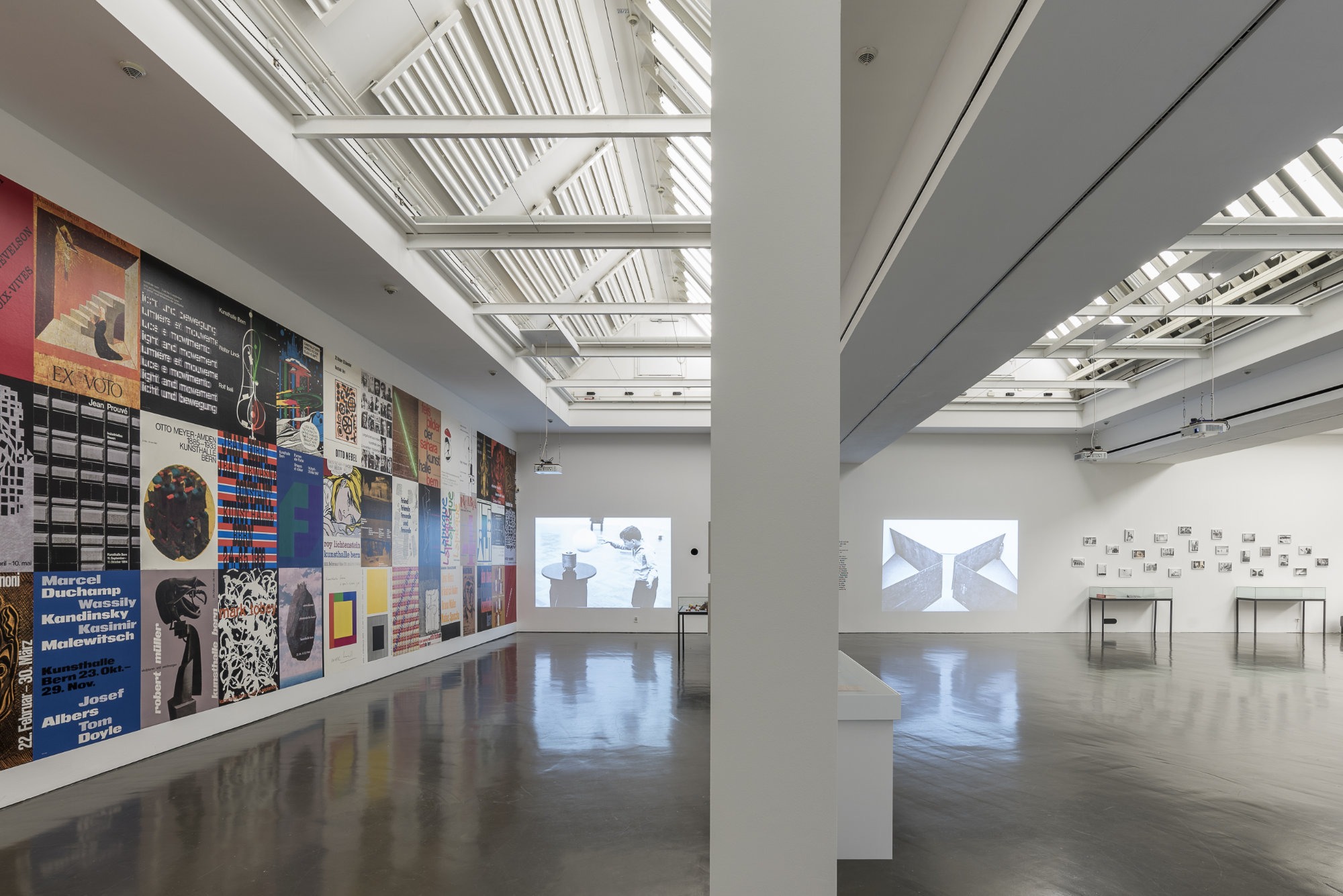
Installationsaufnahmen der Ausstellung „Harald Szeemann. Museum der Obsessionen“ in der Kunsthalle Düsseldorf, 2018
Foto: Katja Illner
Foto: Katja Illner

Installationsaufnahmen der Ausstellung „Harald Szeemann. Museum der Obsessionen“ in der Kunsthalle Düsseldorf, 2018
Foto: Katja Illner
Foto: Katja Illner
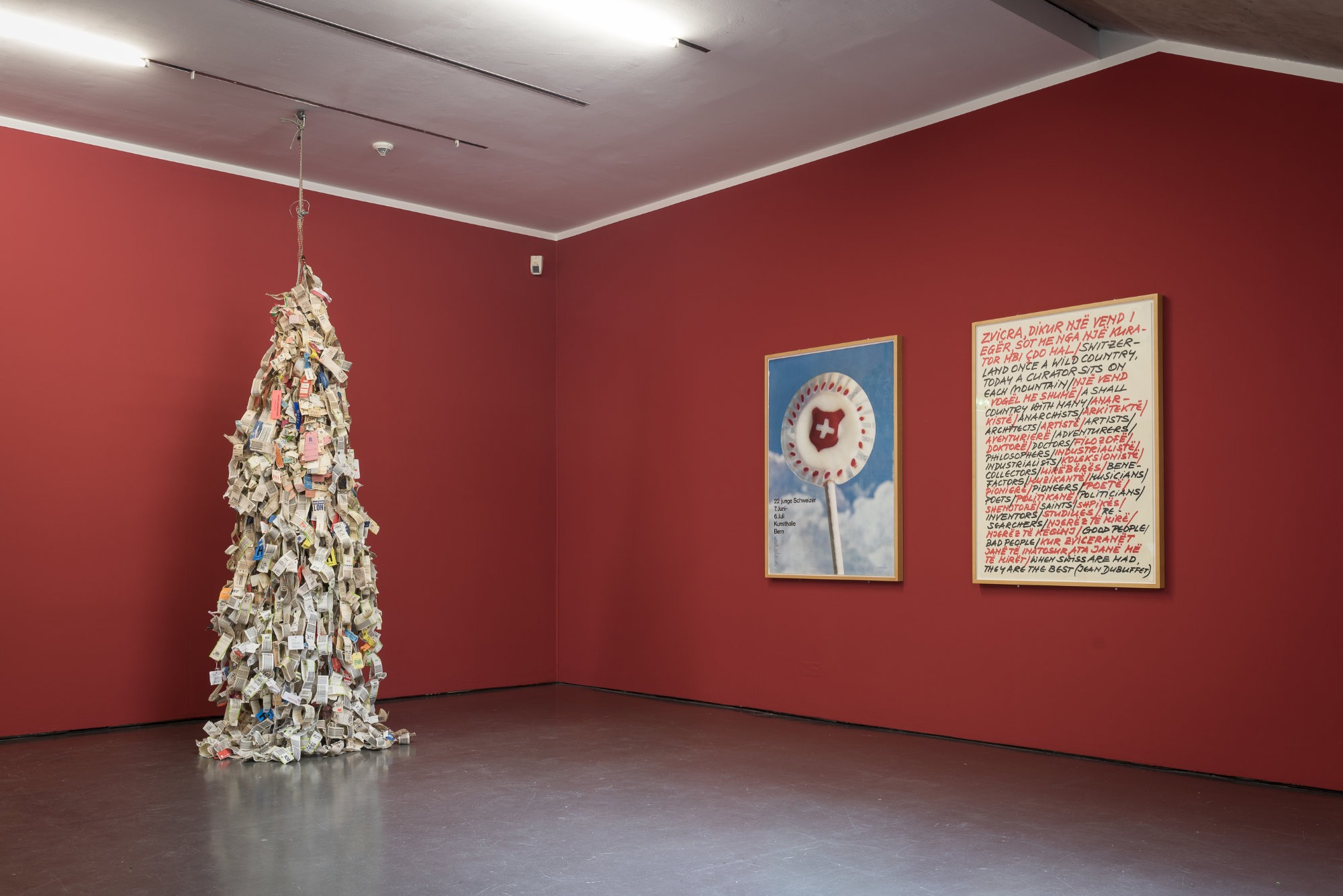
Installationsaufnahmen der Ausstellung „Harald Szeemann. Museum der Obsessionen“ in der Kunsthalle Düsseldorf, 2018
Foto: Katja Illner
Foto: Katja Illner

Installationsansicht der Ausstellung „Harald Szeemann. Museum der Obsessionen“ in der Kunsthalle Düsseldorf, 2018
Rechts im Bild: Werner Ruck und Paul Gysin, Modell der Foltermaschine aus Franz Kafkas „in der Strafkolonie“, 1975
Foto: Katja Illner
Rechts im Bild: Werner Ruck und Paul Gysin, Modell der Foltermaschine aus Franz Kafkas „in der Strafkolonie“, 1975
Foto: Katja Illner
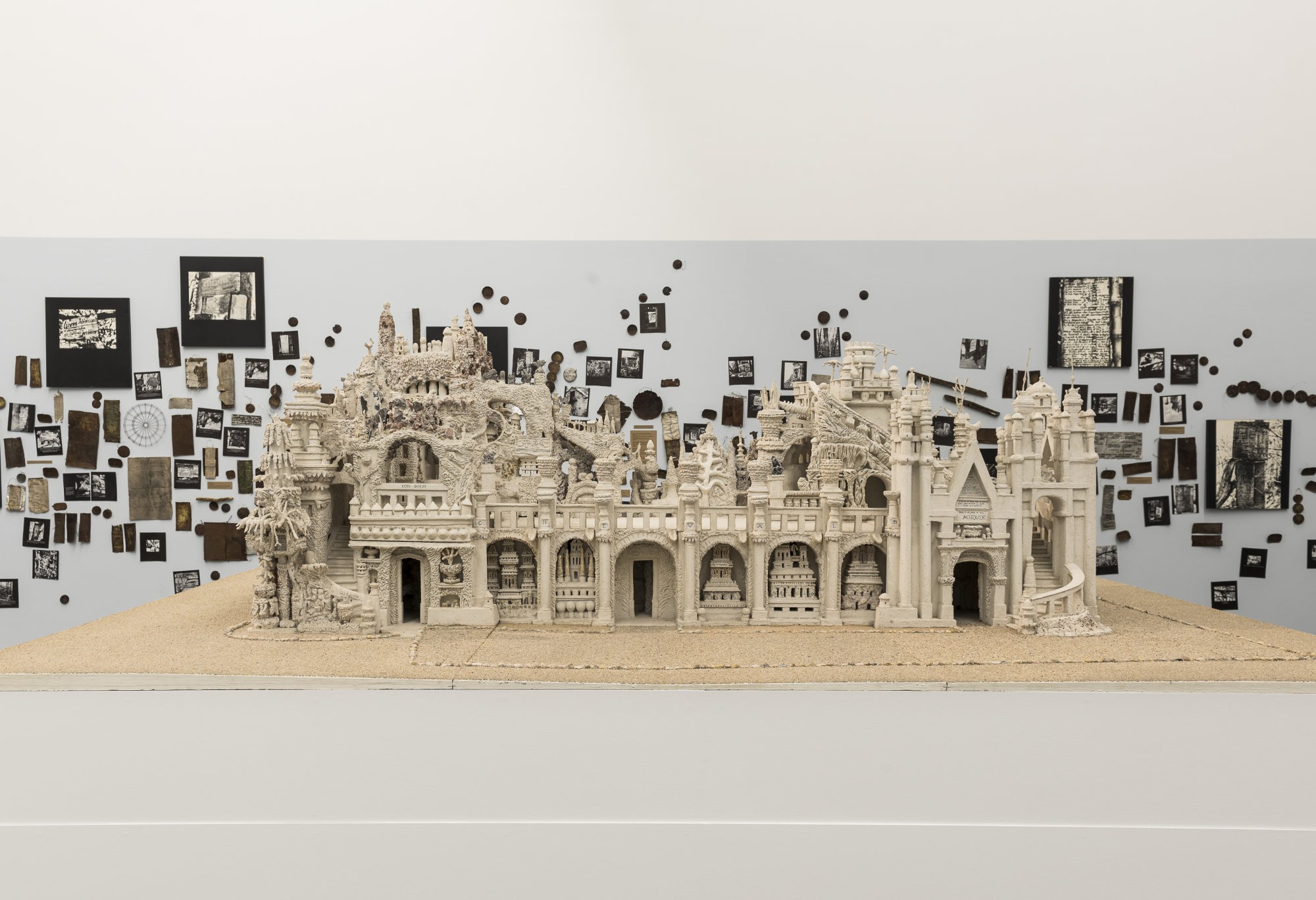
Alain Duperon, Rekonstruktion des „Palais Idéal“ von Ferdinand Cheval
Installationsansicht Kunsthalle Düsseldorf, 2018
Im Hintergrund:
Armand Schulthess, Enzyklopädie im Wald, 1952-1972
Foto: Katja Illner
Installationsansicht Kunsthalle Düsseldorf, 2018
Im Hintergrund:
Armand Schulthess, Enzyklopädie im Wald, 1952-1972
Foto: Katja Illner

Installationsaufnahmen der Ausstellung „Harald Szeemann. Grossvater: Ein Pionier wie wir“ in der Kunsthalle Düsseldorf, 2018. Foto: Katja Illner

Installationsaufnahmen der Ausstellung „Harald Szeemann. Grossvater: Ein Pionier wie wir“ in der Kunsthalle Düsseldorf, 2018.Foto: Katja Illner
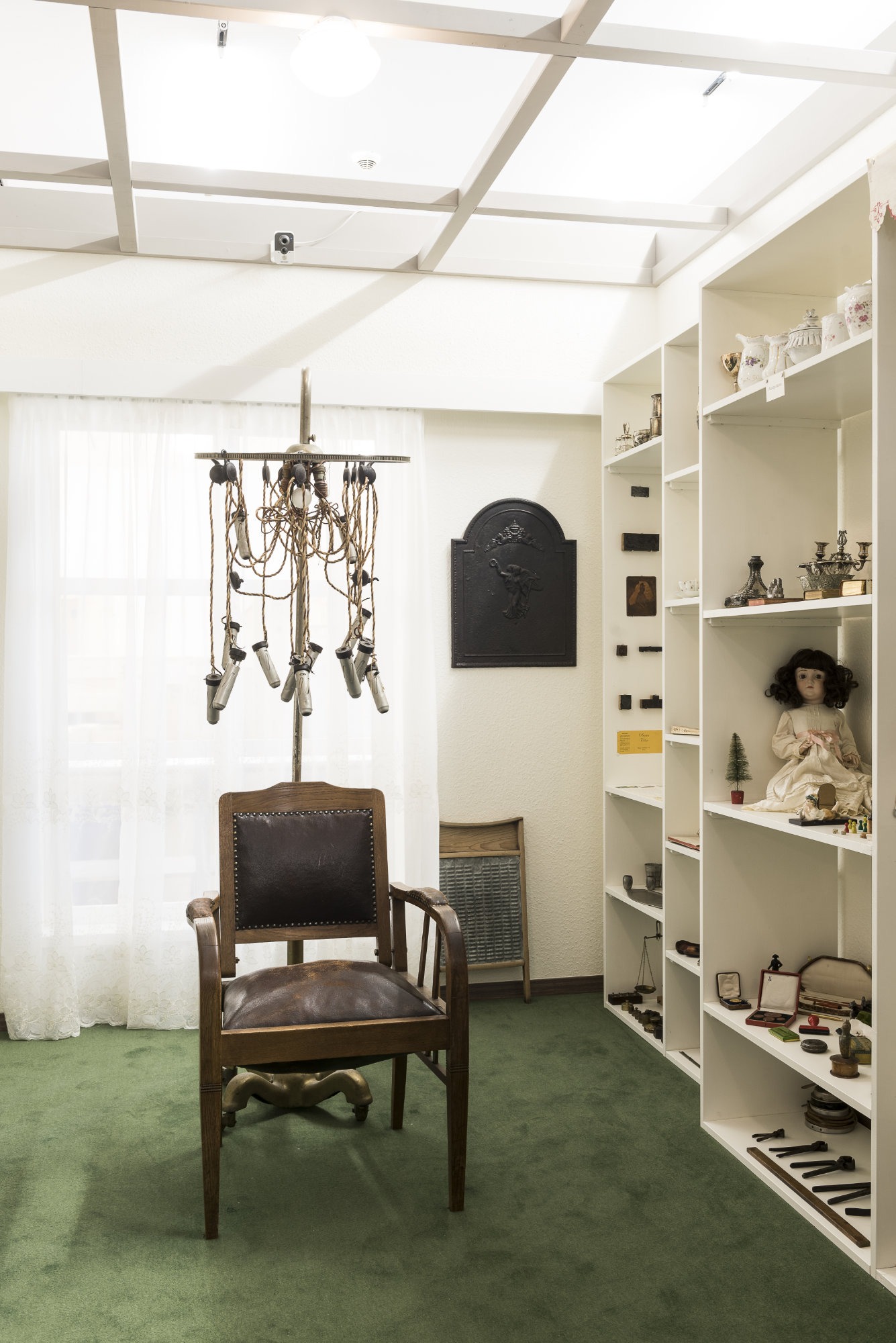
Installationsaufnahmen der Ausstellung „Harald Szeemann. Grossvater: Ein Pionier wie wir“ in der Kunsthalle Düsseldorf, 2018. Foto: Katja Illner
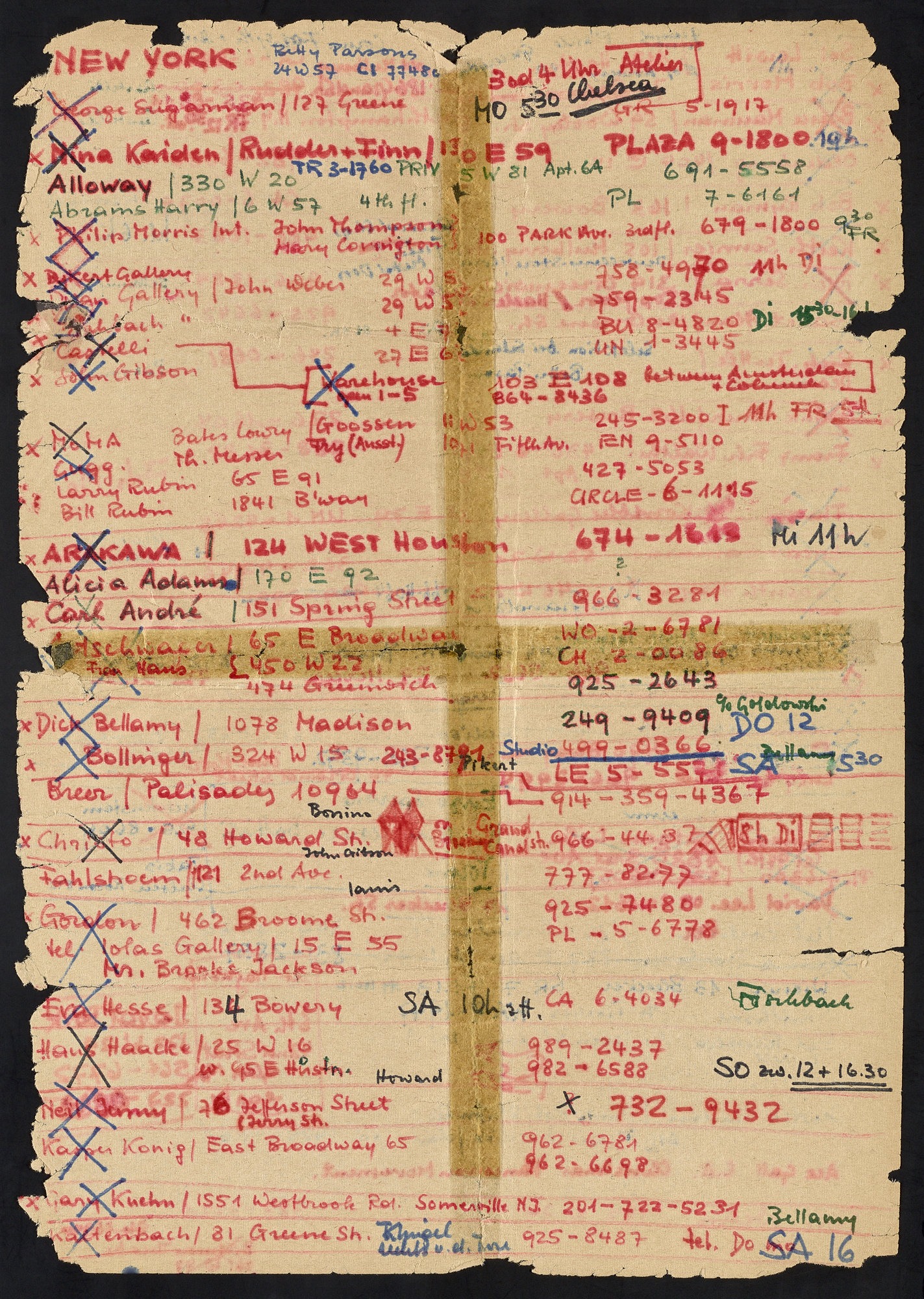
Vorderseite einer Liste mit New Yorker Adressen, zusammengestellt von Harald Szeemann in Vorbereitung der Ausstellung Live in Your Head: When Attitudes Become Form: Works – Concepts – Situations – Information, 1968
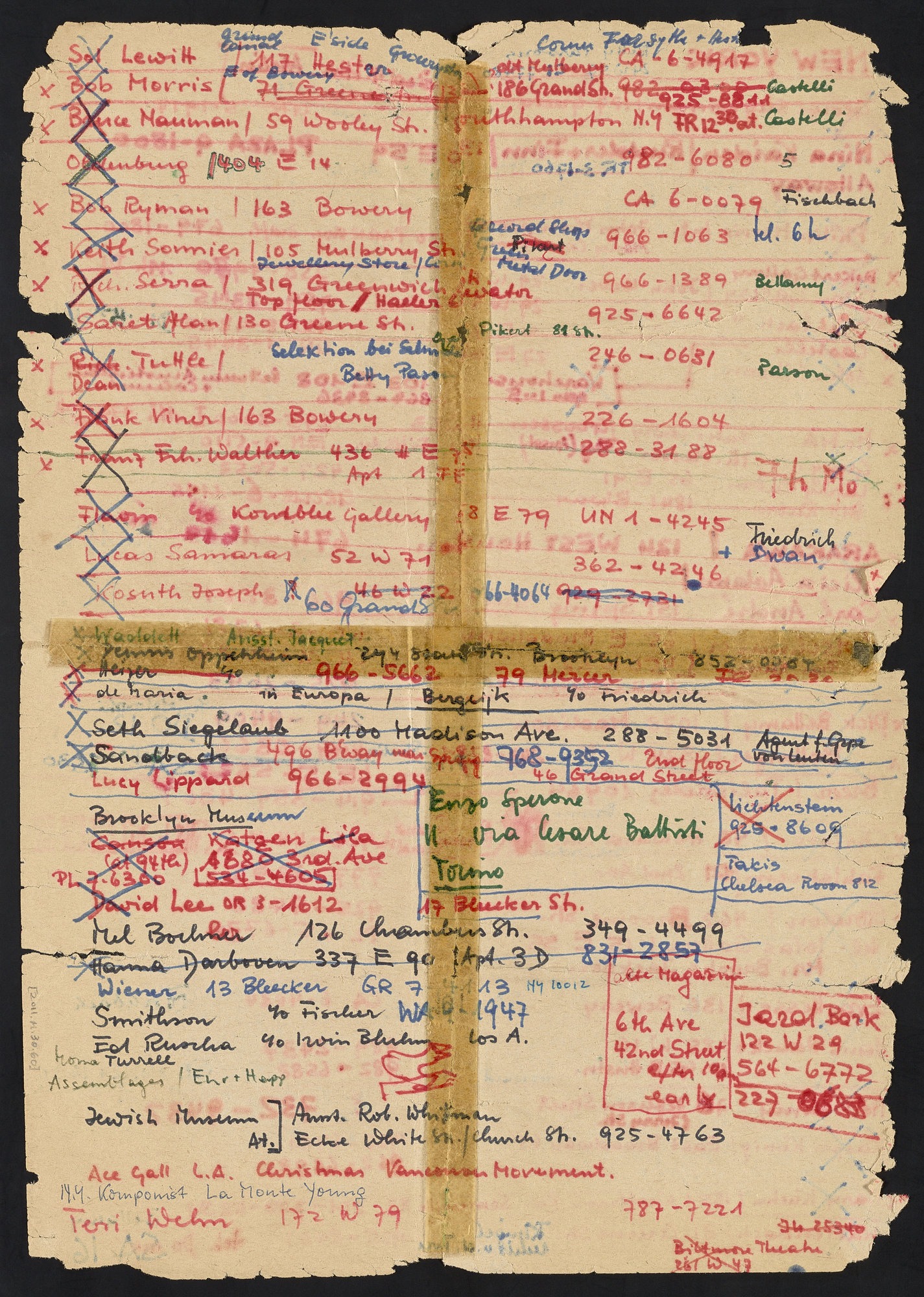
Rückseite einer Liste mit New Yorker Adressen, zusammengestellt von Harald Szeemann in Vorbereitung der Ausstellung Live in Your Head: When Attitudes Become Form: Works – Concepts – Situations – Information, 1968
HARALD SZEEMANN. MUSEUM OF OBSESSIONS
HARALD SZEEMANN. GRANDFATHER: A PIONEER LIKE US
Two exhibitions about an exhibition organizer are unusual and as extravagant as their topic, the legend Harald Szeemann. A native of Switzerland, Szeemann realized experimental exhibitions that broke with the conventions of the time. Through this work, and through his idiosyncratic self-image as an exhibition organizer as well as his
manner of working with artists, he had a lasting impact on our understanding of the role of the curator.
This wide-ranging exhibition offers insight into the life and work of Harald Szeemann and shows the complexity of his themes, interests, and developments using archival documents as well as artworks and films.
Harald Szeemann was born in 1933 in Bern. During his time as director of the Kunsthalle Bern from 1961 to 1969 and then as a freelance curator at his “agency for intellectual guest work” in Tegna in Tessin, far from any institutional constraints, he curated some 200 exhibitions up until his death in 2005. His office was at the Fabbrica Rosa in Maggia; there, across some 2,700 square meters of space, he archived materials from his work and research for his revolutionary projects. After all, in addition to curating, collecting and documenting were also passions of his.
In 2011, the Getty Research Institute in Los Angeles acquired the vast estate of the exhibition organizer and obsessive collector. Over the course of seven years, a team of several people processed Szeemann’s collection, spanning some 600 meters of shelves of heterogeneous materials from his home, and thus raised new questions not only on the history of curating and the role of the curator. The research on the estate also took place during a period in which the digitization of archives from the 1968 protest movement made the art-historical narrative and contextualization of usually ephemeral legacies of radical artist utopias an urgent priority.
documenta, which has taken place in Kassel since 1955, quickly became a legendary, global art exhibition. But it was only after 1972, when Harald Szeemann organized documenta 5, that it achieved mythical status. Szeemann is one of the most important exhibition organizers in recent history and is celebrated for his pioneering exhibitions. This is true in particular of the
exhibitions from 1961 to 1969 which he curated as director of the Kunsthalle Bern, such as Live in Your Head: When Attitudes Become Form (1969) as well as documenta 5 in 1972 in Kassel and many others, including Junggesellenmaschinen (1975) and Hang zum Gesamtkunstwerk (1983).
With the aim of presenting the curator’s work to a large audience for the first time, the Getty Research Institute showed two related exhibitions in Los Angeles in February 2018: Harald Szeemann: Museum of Obsessions and a reconstruction of the exhibition in his apartment in Bern, Grandfather: A Pioneer Like Us (1974), one of Szeemann’s most personal but also most radical exhibitions. After documenta 5, in Grandfather Szeemann focused on his grandfather Etienne Szeemann (1873–1971), who did pioneering work in the hairdressing industry. Harald Szeemann staged this fascinating exhibition in his apartment in Bern. The reconstructed exhibition featuring numerous original works will be shown in Bern from 9 June to 2 September 2018 in the same place, while the Kunsthalle Bern will present the show Museum of Obsessions during the same period.
These two exhibitions, presented together for the first time at the Kunsthalle Düsseldorf, offer a multifaceted look at Harald Szeemann’s universe. After the Kunsthalle Düsseldorf, the exhibition will travel to the Castello di Rivoli near Turin and the Swiss Institute in New York.
The exhibition is curated by Glenn Phillips and Philipp Kaiser with Doris Chon and Pietro Rigolo in Düsseldorf in collaboration with Gregor Jansen. The exhibition catalog was published by Scheidegger & Spiess in Switzerland.
HARALD SZEEMANN. GRANDFATHER: A PIONEER LIKE US
Two exhibitions about an exhibition organizer are unusual and as extravagant as their topic, the legend Harald Szeemann. A native of Switzerland, Szeemann realized experimental exhibitions that broke with the conventions of the time. Through this work, and through his idiosyncratic self-image as an exhibition organizer as well as his
manner of working with artists, he had a lasting impact on our understanding of the role of the curator.
This wide-ranging exhibition offers insight into the life and work of Harald Szeemann and shows the complexity of his themes, interests, and developments using archival documents as well as artworks and films.
Harald Szeemann was born in 1933 in Bern. During his time as director of the Kunsthalle Bern from 1961 to 1969 and then as a freelance curator at his “agency for intellectual guest work” in Tegna in Tessin, far from any institutional constraints, he curated some 200 exhibitions up until his death in 2005. His office was at the Fabbrica Rosa in Maggia; there, across some 2,700 square meters of space, he archived materials from his work and research for his revolutionary projects. After all, in addition to curating, collecting and documenting were also passions of his.
In 2011, the Getty Research Institute in Los Angeles acquired the vast estate of the exhibition organizer and obsessive collector. Over the course of seven years, a team of several people processed Szeemann’s collection, spanning some 600 meters of shelves of heterogeneous materials from his home, and thus raised new questions not only on the history of curating and the role of the curator. The research on the estate also took place during a period in which the digitization of archives from the 1968 protest movement made the art-historical narrative and contextualization of usually ephemeral legacies of radical artist utopias an urgent priority.
documenta, which has taken place in Kassel since 1955, quickly became a legendary, global art exhibition. But it was only after 1972, when Harald Szeemann organized documenta 5, that it achieved mythical status. Szeemann is one of the most important exhibition organizers in recent history and is celebrated for his pioneering exhibitions. This is true in particular of the
exhibitions from 1961 to 1969 which he curated as director of the Kunsthalle Bern, such as Live in Your Head: When Attitudes Become Form (1969) as well as documenta 5 in 1972 in Kassel and many others, including Junggesellenmaschinen (1975) and Hang zum Gesamtkunstwerk (1983).
With the aim of presenting the curator’s work to a large audience for the first time, the Getty Research Institute showed two related exhibitions in Los Angeles in February 2018: Harald Szeemann: Museum of Obsessions and a reconstruction of the exhibition in his apartment in Bern, Grandfather: A Pioneer Like Us (1974), one of Szeemann’s most personal but also most radical exhibitions. After documenta 5, in Grandfather Szeemann focused on his grandfather Etienne Szeemann (1873–1971), who did pioneering work in the hairdressing industry. Harald Szeemann staged this fascinating exhibition in his apartment in Bern. The reconstructed exhibition featuring numerous original works will be shown in Bern from 9 June to 2 September 2018 in the same place, while the Kunsthalle Bern will present the show Museum of Obsessions during the same period.
These two exhibitions, presented together for the first time at the Kunsthalle Düsseldorf, offer a multifaceted look at Harald Szeemann’s universe. After the Kunsthalle Düsseldorf, the exhibition will travel to the Castello di Rivoli near Turin and the Swiss Institute in New York.
The exhibition is curated by Glenn Phillips and Philipp Kaiser with Doris Chon and Pietro Rigolo in Düsseldorf in collaboration with Gregor Jansen. The exhibition catalog was published by Scheidegger & Spiess in Switzerland.
